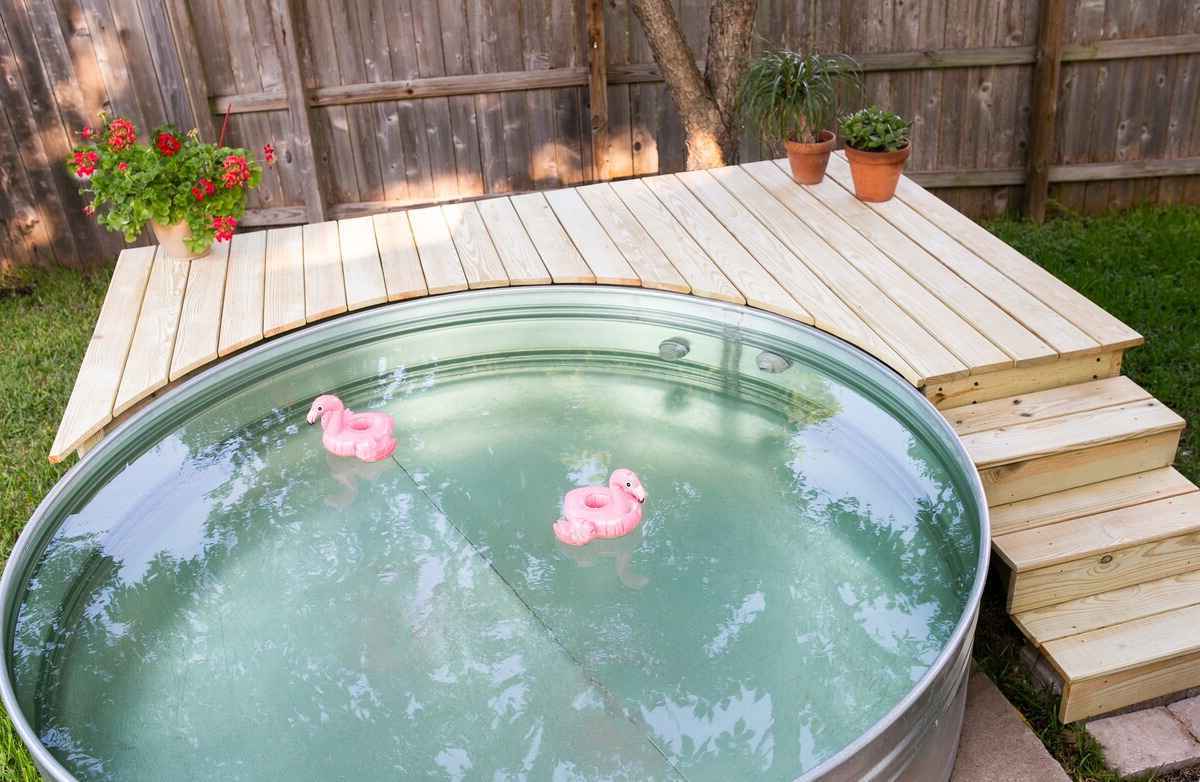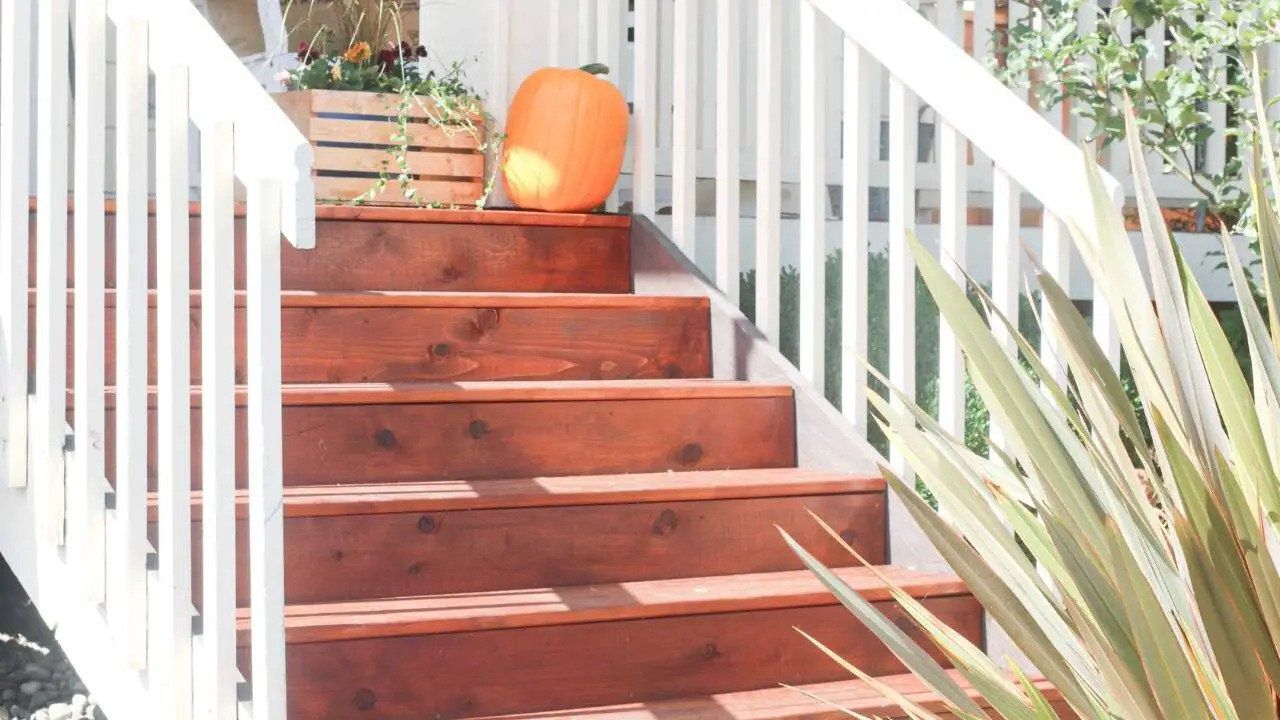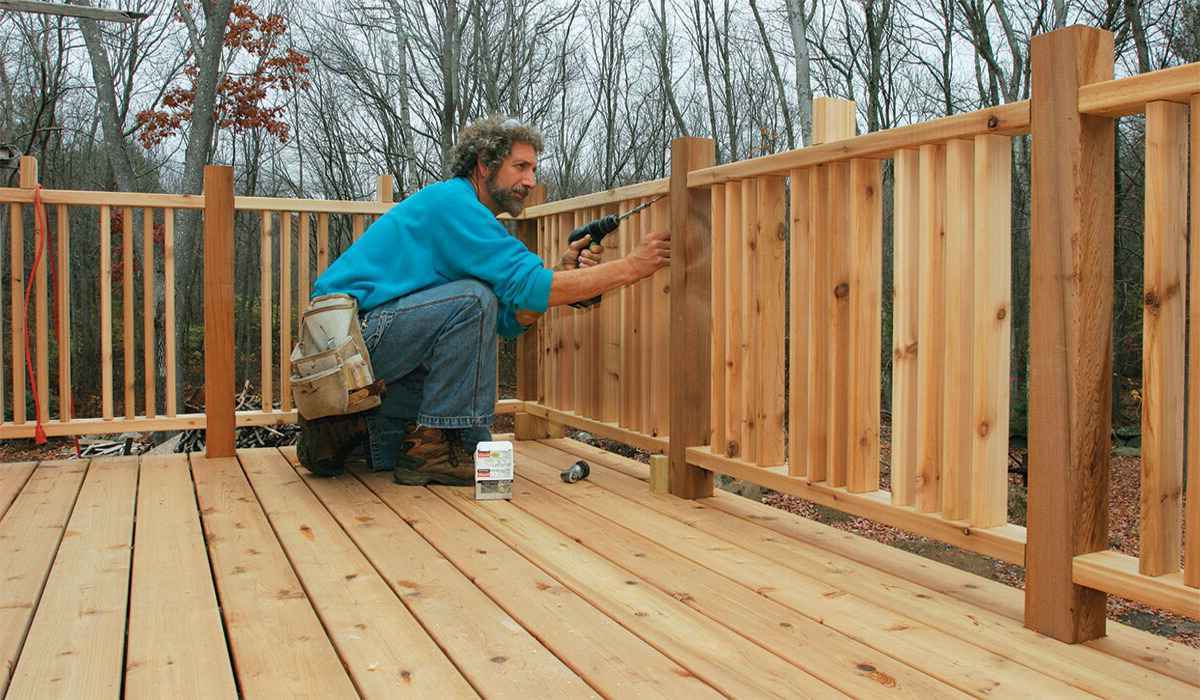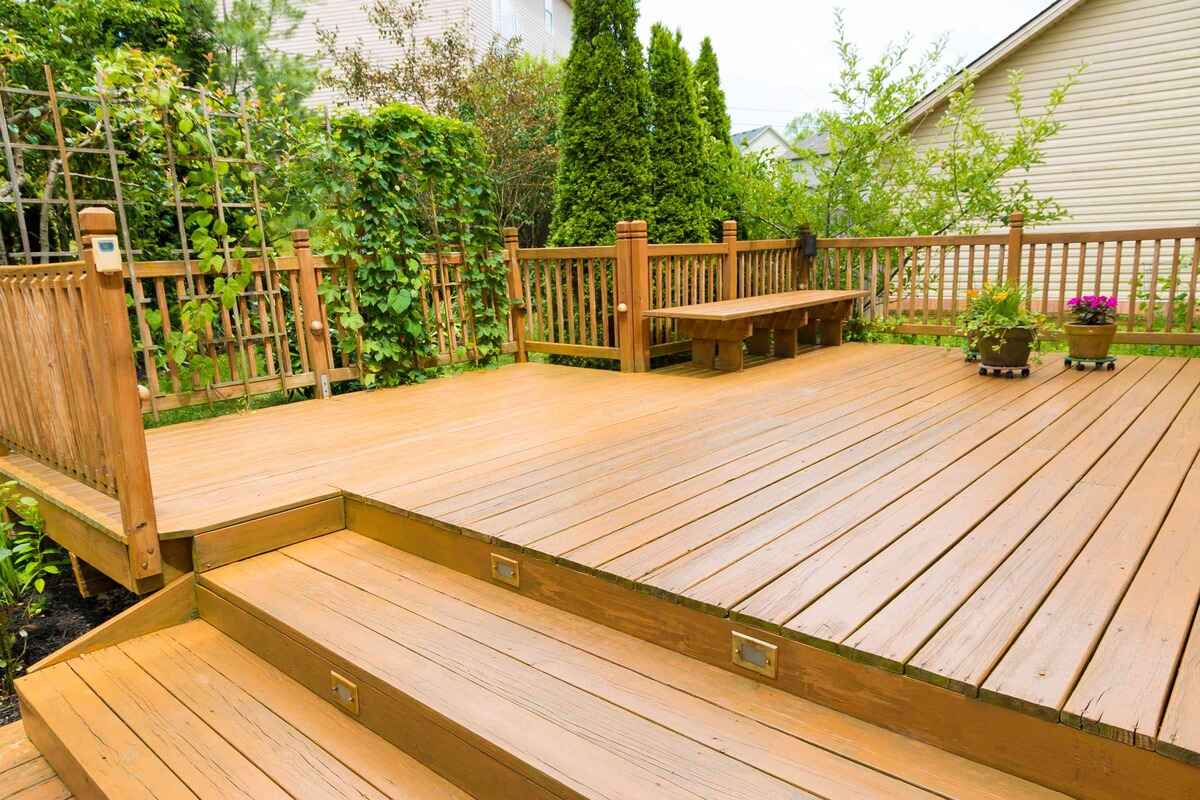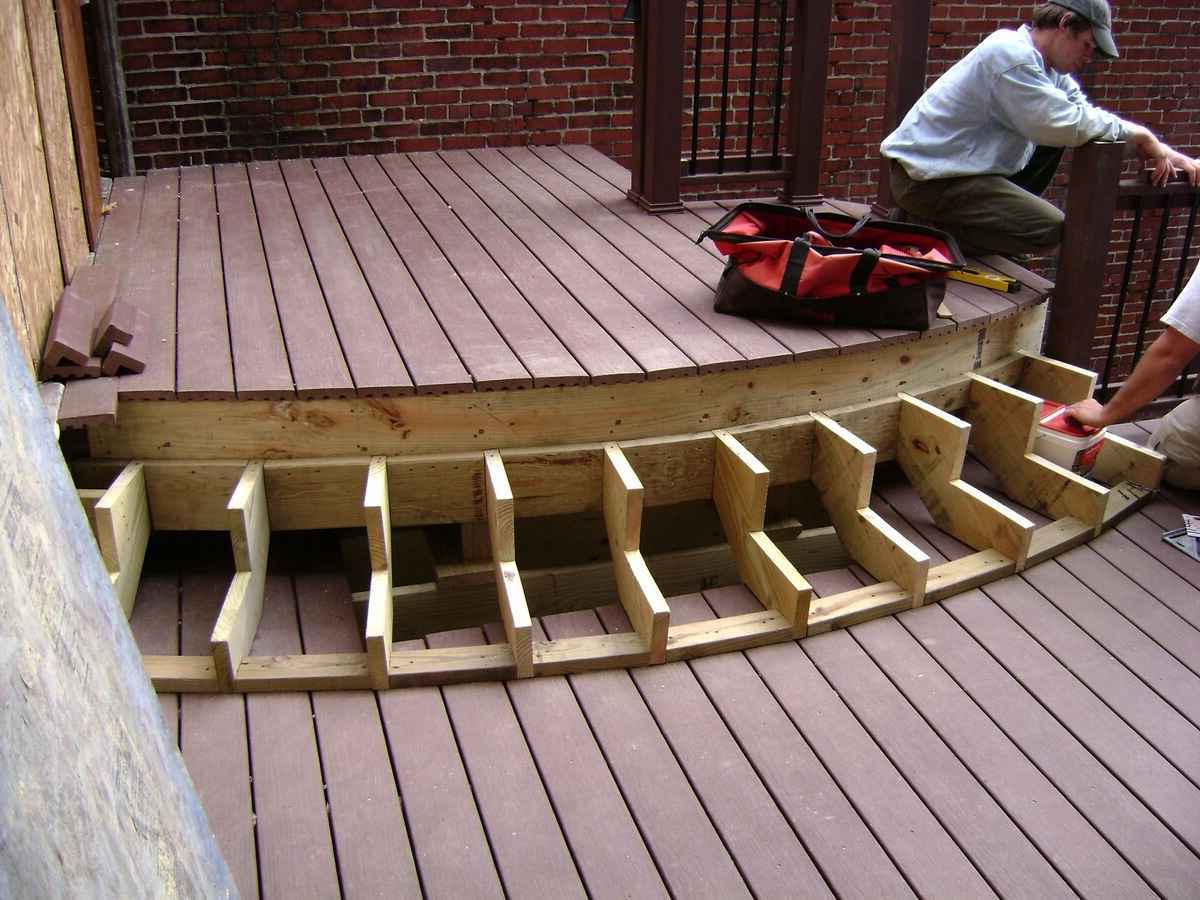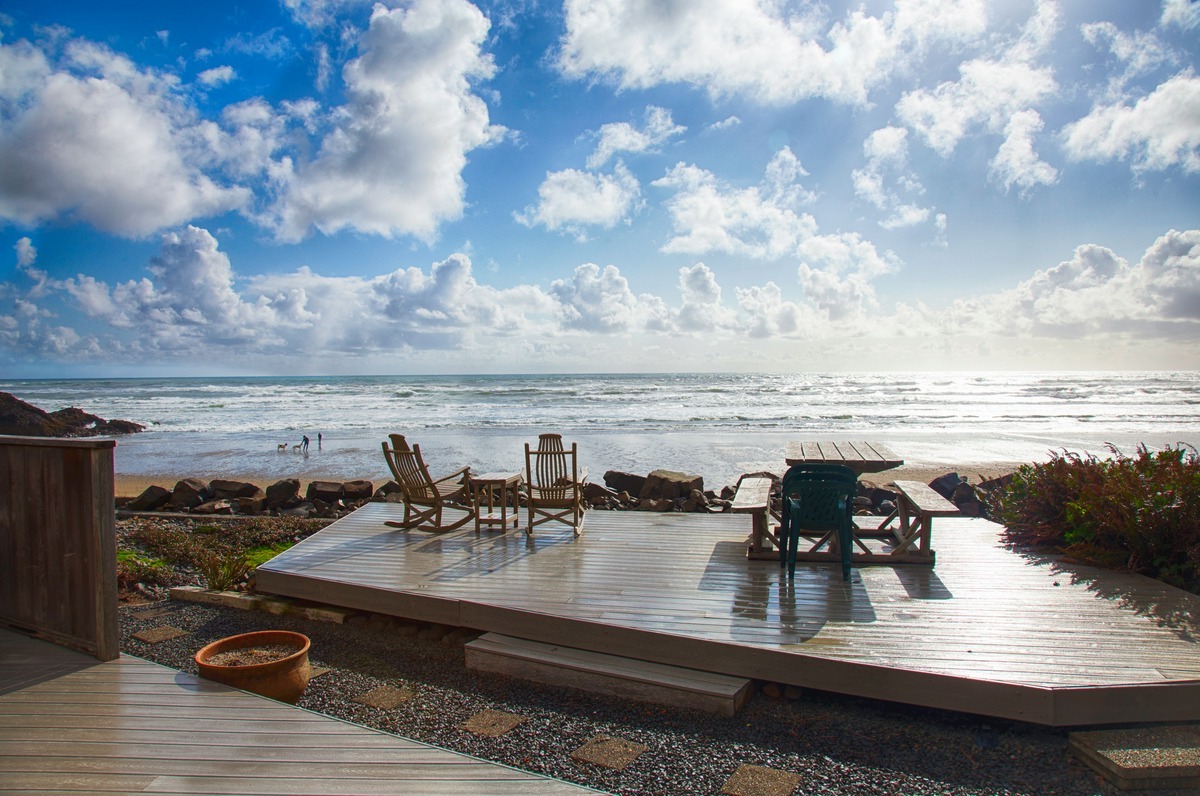Home>Outdoors & Camping>Hardscaping>How To Build A Deck Over A Pond
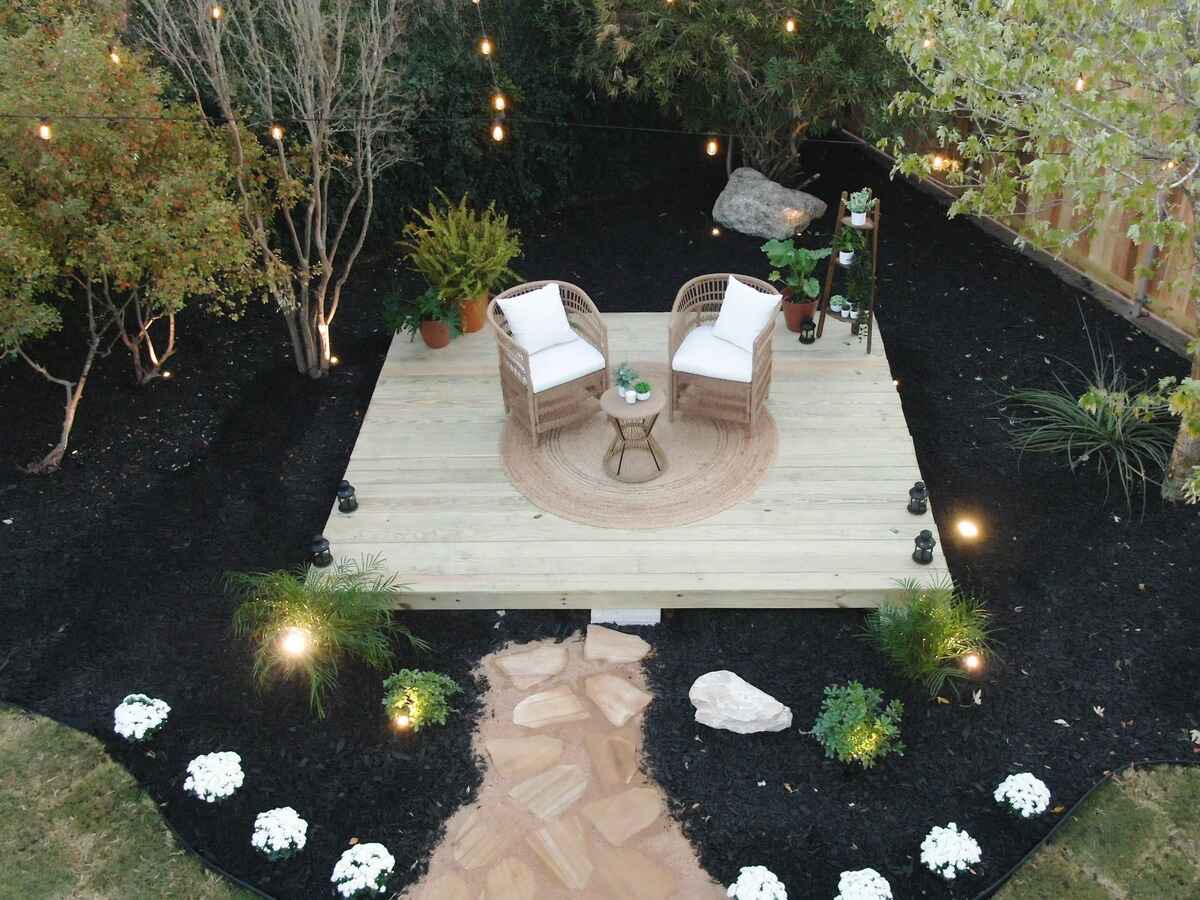

Hardscaping
How To Build A Deck Over A Pond
Modified: May 30, 2024

Content Creator for Outdoors & Camping, Sophie turns any yard into a sustainable paradise. Her dedication to DIY outdoor projects and volunteer work in community gardens shares joy and knowledge.
Learn how to create a stunning hardscaping feature by building a deck over a pond with our comprehensive guide. Transform your outdoor space today!
(Many of the links in this article redirect to a specific reviewed product. Your purchase of these products through affiliate links helps to generate commission for Twigandthistle.com, at no extra cost. Learn more)
Introduction
Building a deck over a pond can transform your outdoor space into a serene oasis, offering a unique and picturesque setting for relaxation and entertainment. Whether you envision a tranquil retreat for quiet contemplation or a charming venue for social gatherings, a well-designed deck can elevate the beauty and functionality of your pond area.
In this comprehensive guide, we will explore the step-by-step process of constructing a deck over a pond, from initial planning to the finishing touches. By following these expert insights, you can embark on a rewarding hardscaping project that seamlessly integrates your deck with the natural allure of your pond.
As we delve into each phase of the construction journey, you will gain valuable knowledge on optimizing the design, ensuring structural integrity, and selecting suitable materials for your deck. Moreover, we will highlight essential considerations for preserving the ecological balance of the pond and safeguarding its inhabitants throughout the construction process.
With careful attention to detail and a touch of creativity, you can craft a captivating space that harmonizes with the surrounding landscape while offering a captivating vantage point to admire the aquatic wonders below. Let's embark on this enriching endeavor to bring your vision of a stunning deck over a pond to life.
Read more: How To Build A Pond
Step 1: Planning and Designing Your Deck
Before embarking on the construction of a deck over a pond, meticulous planning and thoughtful design are crucial to ensure a successful and harmonious integration with the natural environment. This initial phase sets the foundation for the entire project, encompassing key considerations such as safety, aesthetics, and functionality.
Assessing the Site
The first step in planning your deck involves a thorough assessment of the pond area. Take note of the pond's dimensions, shape, and surrounding landscape features. Consider the existing flora and fauna, as well as any unique characteristics that contribute to the ambiance of the setting. Understanding these elements will guide the design process and help preserve the natural charm of the pond.
Determining Deck Size and Layout
Next, determine the size and layout of the deck based on your envisioned use and the available space. Consider factors such as seating areas, walkways, and potential amenities like a pergola or built-in planters. By visualizing how the deck will be utilized, you can optimize its design to accommodate various activities while maximizing the scenic views of the pond.
Safety and Structural Considerations
Safety is paramount when designing a deck over a pond. Ensure that the deck's structural integrity meets local building codes and regulations. Consider the weight-bearing capacity of the deck to support furniture, gatherings, and foot traffic. Additionally, incorporate safety features such as railings and non-slip surfaces to prevent accidents and enhance the overall user experience.
Read more: How To Build A Koi Pond With Waterfall
Material Selection
Carefully select materials that complement the natural surroundings and withstand exposure to moisture. Options such as composite decking, natural wood, or eco-friendly alternatives offer durability and aesthetic appeal. Factor in maintenance requirements and environmental impact when choosing the decking material, aiming for a balance of longevity and eco-consciousness.
Environmental Impact
Respect for the pond's ecosystem is essential throughout the planning and design phase. Minimize disruption to the natural habitat by avoiding invasive construction practices. Consider incorporating eco-friendly features such as permeable decking surfaces to promote water drainage and preserve the pond's ecological balance.
Visual Integration
Harmonizing the deck with the pond's visual appeal is key to achieving a seamless integration. Explore design elements that reflect the tranquility of the water, such as curved edges, natural color palettes, and strategic positioning to frame captivating views. By blending the deck with the surrounding landscape, you can create a captivating and cohesive outdoor space.
In essence, the planning and design phase sets the stage for a well-crafted deck that enhances the allure of your pond while prioritizing safety, sustainability, and aesthetic harmony. With a clear vision and attention to detail, your deck will seamlessly merge with the natural beauty of the pond, offering a captivating retreat for relaxation and enjoyment.
Step 2: Preparing the Pond Area
Preparing the pond area for the construction of a deck is a critical phase that demands careful attention to preserve the ecological balance and aesthetic appeal of the natural habitat. This process involves thoughtful measures to safeguard the pond's ecosystem while creating a solid foundation for the deck structure.
Read more: How To Build An Awning Over A Door
Clearing and Marking the Site
The initial step in preparing the pond area involves clearing the designated site where the deck will be constructed. Remove any debris, vegetation, or obstructions to create a clean and level surface. Mark the boundaries of the deck area, ensuring that it aligns with the predetermined layout and dimensions. This meticulous preparation sets the stage for seamless integration between the deck and the pond environment.
Protecting the Pond Ecosystem
During the clearing process, it is imperative to prioritize the protection of the pond ecosystem. Exercise caution to avoid disturbing the aquatic life, surrounding vegetation, and natural habitat. Implement measures to prevent soil erosion and sediment runoff into the pond, preserving water quality and the well-being of its inhabitants. By minimizing ecological disruption, you can uphold the environmental integrity of the pond throughout the construction process.
Assessing Soil and Drainage
Evaluate the soil composition and drainage patterns in the pond area to ensure proper water management. Adequate drainage is essential to prevent water accumulation beneath the deck, which can lead to structural issues and potential damage over time. Address any drainage concerns by incorporating solutions such as gravel beds, perforated pipes, or strategic grading to direct water away from the deck site, safeguarding its stability and longevity.
Installing Support Footings
To establish a stable foundation for the deck, the installation of support footings is a pivotal step in preparing the pond area. Depending on the deck design and local building codes, determine the appropriate footing placement and dimensions. Utilize durable materials such as concrete or composite footings to withstand moisture exposure and provide reliable support for the deck structure. Ensuring proper footing installation is essential for the structural integrity and load-bearing capacity of the deck over the pond.
Read more: How To Build A Ramp Over Stairs
Environmental Compliance
Adhere to environmental regulations and local ordinances governing construction near water bodies. Obtain necessary permits and approvals to ensure compliance with environmental standards and conservation efforts. By following established guidelines and seeking professional guidance when needed, you can navigate the regulatory landscape while upholding environmental responsibility throughout the deck construction process.
In essence, preparing the pond area involves a conscientious approach to environmental stewardship and structural readiness. By meticulously clearing the site, protecting the pond ecosystem, addressing drainage considerations, and installing robust footings, you can lay the groundwork for a resilient and environmentally conscious deck that seamlessly integrates with the natural beauty of the pond.
Step 3: Building the Deck Frame
Building the deck frame is a pivotal phase that forms the structural backbone of your deck over the pond. This foundational framework provides the support and stability necessary to ensure the longevity and safety of the deck, making it essential to execute this step with precision and attention to detail.
Selecting Quality Materials
Begin by selecting high-quality, pressure-treated lumber or durable composite materials for constructing the deck frame. Opt for materials specifically designed to withstand moisture and environmental exposure, ensuring the longevity and resilience of the deck structure. Prioritize treated lumber that is resistant to rot, decay, and insect damage, safeguarding the frame against the rigors of outdoor elements and proximity to the pond.
Accurate Measurements and Layout
Accurate measurements and precise layout are fundamental to constructing a sturdy and well-aligned deck frame. Utilize professional-grade measuring tools and carpenter's squares to ensure the dimensions of the frame components align with the predetermined design. Carefully mark the layout on the prepared site, accounting for any elevation changes or irregularities to maintain a level and uniform frame structure.
Read more: How To Build A Pond Waterfall
Assembly and Fastening Techniques
Employ industry-standard assembly techniques and fastening methods to securely join the frame components. Utilize galvanized or stainless steel hardware to resist corrosion and ensure structural integrity. Employ reliable fastening methods such as lag screws, carriage bolts, or specialized deck screws to reinforce the connections and minimize the risk of loosening or structural compromise over time.
Incorporating Support Beams and Joists
Integrate robust support beams and joists into the frame design to distribute the load evenly and provide essential reinforcement for the deck structure. Position the support beams perpendicular to the joists, creating a stable framework that can accommodate the weight of the decking material, furniture, and anticipated foot traffic. Ensure proper spacing and alignment of the joists to uphold the structural integrity of the deck frame.
Considerations for Water Contact
Given the proximity to the pond, implement measures to mitigate direct water contact and minimize moisture retention within the deck frame. Utilize flashing and waterproofing membranes to shield vulnerable areas of the frame from prolonged exposure to moisture, preventing potential decay and structural compromise. By addressing water contact concerns during the frame construction, you can enhance the durability and resilience of the deck structure in the pond environment.
Professional Guidance and Compliance
Seek professional guidance and adhere to local building codes and regulations governing deck construction near water bodies. Engage qualified professionals or consult relevant authorities to ensure compliance with safety standards and environmental considerations. By integrating expert insights and adhering to established guidelines, you can navigate the construction process with confidence and accountability.
In essence, building the deck frame demands meticulous craftsmanship, quality materials, and adherence to structural best practices. By prioritizing precision in measurements, employing reliable assembly techniques, and addressing water contact concerns, you can establish a robust and enduring frame that forms the foundation for a captivating deck over the pond.
Read more: How To Build A Pond Dock
Step 4: Installing the Decking Material
With the deck frame in place, the installation of the decking material marks a significant stride toward realizing the vision of a captivating deck over the pond. This phase calls for careful consideration of material selection, installation techniques, and aesthetic integration to create a resilient and visually appealing deck surface that harmonizes with the natural allure of the pond environment.
Read more: How To Build A Koi Pond With Waterfall
Material Selection
When choosing the decking material, prioritize options that offer durability, resistance to moisture, and visual appeal. Consider eco-friendly composite decking, which combines wood fibers and recycled plastic to deliver a low-maintenance, long-lasting surface. Alternatively, natural wood species such as cedar or redwood, treated with water-resistant sealants, can infuse a warm, organic charm into the deck design. Evaluate the pros and cons of each material, factoring in maintenance requirements, environmental impact, and visual cohesion with the pond landscape.
Precision Installation
Begin the installation process by carefully aligning and securing the decking boards onto the prepared frame. Utilize stainless steel or corrosion-resistant fasteners to ensure enduring stability and minimize the risk of rust-related discoloration. Employ consistent spacing between the boards to facilitate water drainage and prevent debris accumulation, promoting the longevity of the deck surface. Adhere to manufacturer guidelines and industry best practices to achieve a uniform and structurally sound installation that withstands the rigors of outdoor exposure.
Aesthetic Integration
Integrate the decking material in a manner that complements the natural beauty of the pond, enhancing the visual harmony of the outdoor space. Consider the orientation and pattern of the decking boards to optimize scenic views and create a seamless transition between the deck and the water's edge. Embrace design elements that echo the tranquility of the pond, such as gentle curves, natural color palettes, and strategic positioning to frame captivating vistas. By thoughtfully integrating the decking material, you can elevate the aesthetic allure of the deck while preserving the scenic charm of the pond environment.
Read more: How To Build A Natural Pond
Environmental Considerations
Throughout the installation of the decking material, prioritize eco-conscious practices to minimize the environmental impact. Opt for sustainable decking materials that align with responsible forestry practices or utilize recycled content, reducing the ecological footprint of the deck construction. Embrace permeable decking surfaces or consider incorporating greenery within the deck design to promote water drainage and ecological balance. By embracing environmentally friendly approaches, you can create a deck that not only enhances the pond setting but also upholds environmental stewardship.
In essence, the installation of the decking material represents a pivotal phase in the construction of a deck over a pond. By selecting resilient materials, executing precise installation techniques, embracing aesthetic integration, and prioritizing environmental considerations, you can craft a visually captivating and enduring deck surface that seamlessly merges with the natural allure of the pond, offering a captivating retreat for relaxation and enjoyment.
Step 5: Adding Finishing Touches
As the construction of the deck over the pond nears completion, the addition of finishing touches plays a pivotal role in enhancing the functionality, aesthetics, and overall ambiance of the outdoor space. This phase encompasses a range of thoughtful details and embellishments that elevate the deck's allure while harmonizing with the tranquil beauty of the pond environment.
Railing and Balustrades
Incorporating sturdy and visually appealing railings or balustrades around the perimeter of the deck enhances safety and defines the space with an elegant touch. Select materials and designs that complement the deck's aesthetic while providing a secure boundary, allowing for unobstructed views of the pond.
Lighting Solutions
Strategically placed lighting fixtures illuminate the deck area, extending its functionality into the evening hours while creating a captivating ambiance. Explore options such as low-voltage LED deck lights, solar-powered lanterns, or integrated pathway lighting to enhance safety and create a captivating nighttime atmosphere.
Seating and Furnishings
Integrate comfortable and weather-resistant seating options, such as lounge chairs, benches, or outdoor sofas, to create inviting gathering spaces on the deck. Select furnishings that harmonize with the natural surroundings and offer a cozy retreat for relaxation and socializing.
Greenery and Landscaping
Incorporating potted plants, planter boxes, or vertical gardens within the deck area infuses a touch of greenery, softening the hardscape with natural elements. Choose plant species that thrive in the pond environment, adding texture, color, and a sense of tranquility to the deck setting.
Water Features
Consider integrating subtle water features, such as a small fountain or cascading water feature, to evoke the soothing sounds of water and enhance the sensory experience. Thoughtfully positioned water elements can complement the pond's ambiance, creating a harmonious symphony of natural sounds.
Outdoor Amenities
Explore the addition of outdoor amenities such as a pergola, shade sails, or retractable awnings to provide shelter from the elements and create a comfortable outdoor retreat. These features not only enhance the functionality of the deck but also contribute to its visual appeal and versatility.
Read more: How To Build Composite Deck
Maintenance Considerations
Prioritize the implementation of maintenance solutions, such as storage compartments for outdoor essentials, easy-to-clean surfaces, and durable finishes that withstand environmental exposure. By integrating practical maintenance features, you can ensure the longevity and pristine condition of the deck over the pond.
In essence, adding finishing touches to the deck over the pond encompasses a blend of functional enhancements and aesthetic embellishments that elevate the outdoor space into a captivating retreat. By integrating safety features, lighting solutions, comfortable furnishings, natural elements, and practical amenities, you can create a harmonious and inviting deck environment that seamlessly complements the serene beauty of the pond.
Conclusion
In conclusion, the construction of a deck over a pond represents a harmonious fusion of hardscaping ingenuity and natural splendor, culminating in a captivating outdoor sanctuary. Throughout the meticulous planning, site preparation, frame construction, decking installation, and addition of finishing touches, the endeavor to build a deck over a pond embodies a testament to creativity, craftsmanship, and environmental stewardship.
The process of planning and designing the deck sets the stage for a seamless integration with the pond environment, emphasizing safety, sustainability, and visual harmony. By carefully assessing the site, determining deck size and layout, and selecting suitable materials, the initial phase lays the groundwork for a thoughtfully crafted deck that complements the natural allure of the pond.
Preparing the pond area involves a conscientious approach to environmental preservation and structural readiness. Clearing the site, protecting the pond ecosystem, assessing soil and drainage, and installing support footings are essential steps that uphold the ecological balance and stability of the deck over the pond.
Building the deck frame demands precision, quality materials, and adherence to structural best practices. Selecting durable materials, ensuring accurate measurements, employing reliable assembly techniques, and addressing water contact concerns are pivotal aspects that contribute to the resilience and longevity of the deck structure.
The installation of the decking material represents a transformative phase, where resilient materials, precise installation techniques, aesthetic integration, and environmental considerations converge to create a visually captivating and enduring deck surface that harmonizes with the natural allure of the pond.
Adding finishing touches elevates the deck into a multifaceted retreat, encompassing safety features, lighting solutions, comfortable furnishings, natural elements, and practical amenities that enhance the functionality and visual appeal of the outdoor space.
In essence, the construction of a deck over a pond is a testament to the seamless coexistence of human craftsmanship and natural beauty. By embracing meticulous planning, environmental consciousness, and creative design, a deck over a pond becomes more than a structural addition – it becomes a captivating vantage point that invites moments of tranquility, social gatherings, and a deep connection with the serene wonders of the aquatic landscape.

